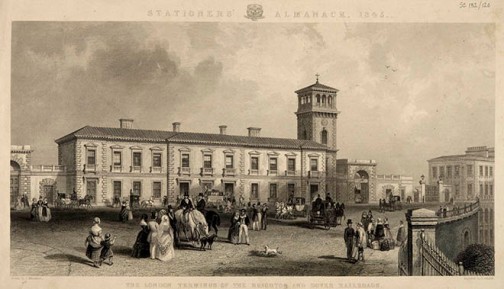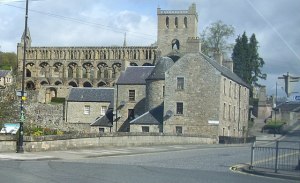
Thomas Ruddy, now 23, set out from London Bridge Station in October 1865 to study French methods of horticulture. He does not describe in his journal how the arrangements were made with the Nursery of M. André Leroy in Angers, France. The plans were obviously well organised, as Thomas appears to have been assured in his travel arrangements, stopping in Paris for two nights before continuing by train to Angers. He even had the address of a Nursery in Paris which he visited on his way to Angers.
He soon found that his French lessons from a book at Minto House garden bothy were not sufficient to get by when it came to practical conversation. Help came from an unlikely source:
On getting into the harbour of Dieppe we for the first time found ourselves in a strange land; the language seemed to change so suddenly that we felt quite helpless. The little knowledge I had of it was from books, so that I did not understand the strange sounds. We were standing near an aged lady before stepping onto French soil, talking about our helplessness; this lady turned to us and offered to help us in any way. The lady was a native of Peru, spoke French and English well; she was a governess on her way to join an English family in Paris. This lady was of great assistance to us all the way to Paris.
By the time he left France 8 months later, Thomas had acquired enough French to be the assistant himself:
I was sea sick on the voyage, but all right and active when I got to Newhaven. I had the company of a French man to London, who was going to see a little daughter of his, who was at an English school. At Lewes, while waiting for another train I had to be his interpreter in getting coffee, and at London I sent him off all right. He was thankful to me.
For Thomas’ full account of his time in France, see here. An edited account of his horticultural studies is here.


![moore-nature-printed-ferns-1860-botanical-print.-asplenium-germanicum-80-58831-p[ekm]416x554[ekm]](https://wendcarey.files.wordpress.com/2016/01/moore-nature-printed-ferns-1860-botanical-print-asplenium-germanicum-80-58831-pekm416x554ekm.jpg?w=225&h=300)





